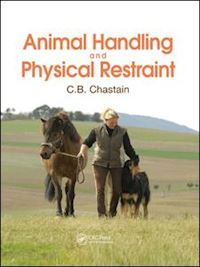3* Doodys Star Rating Proper handling and restraint are essential to the welfare of captive animals, allowing them to be examined, groomed and treated in ways that contribute to their optimum quantity and quality of life. The aim of the book is to prepare future or current veterinarians and veterinary technologists, technicians/nurses, and assistants to be able to handle animals more safely and gain the confidence of animals and their owners. In turn, they will be able to instruct owners in proper animal handling methods, reducing the risk of physical injury or mutual infectious diseases. Covers more species and has greater depth in handling and restraint methods of domestic animals than any of its predecessors and current competitors. No other handling book provides thisbreadth information on the possible zoonoses (animal to human diseases) that might be encountered in handling apparently healthy animals. Restraint methods are well described but not in a list or "cookbook" way, as there are always nuances in handling each individual animal that require individual adaptations. Throughout the book, the author emphasises that each animal is an individual and each handling environment provides its own advantages and disadvantages: handling an animal safely, humanely and efficiently requires practical knowledge of the species normal behaviour. This is explored in detail in each of the species-based chapters, which cover proper handling of domestic household and laboratory animals, as well as farm and ranch animals where safe handling aids the producer in both humane practice and greater profitability. After reading this book, the practitioner or student will be versed in the most basic part of the art of veterinary medicine: the safe handling of animals. The author's podcast 'Better Animal Handling' is released every Tuesday at http://www.buzzsprout.com/688886, discussing content in the book anddescribing effective, humane animal handling with emphasis on safety measures to prevent injury and the transmission of zoonotic diseases.You can read more on thesupporting website: www.betteranimalhandling.com.











